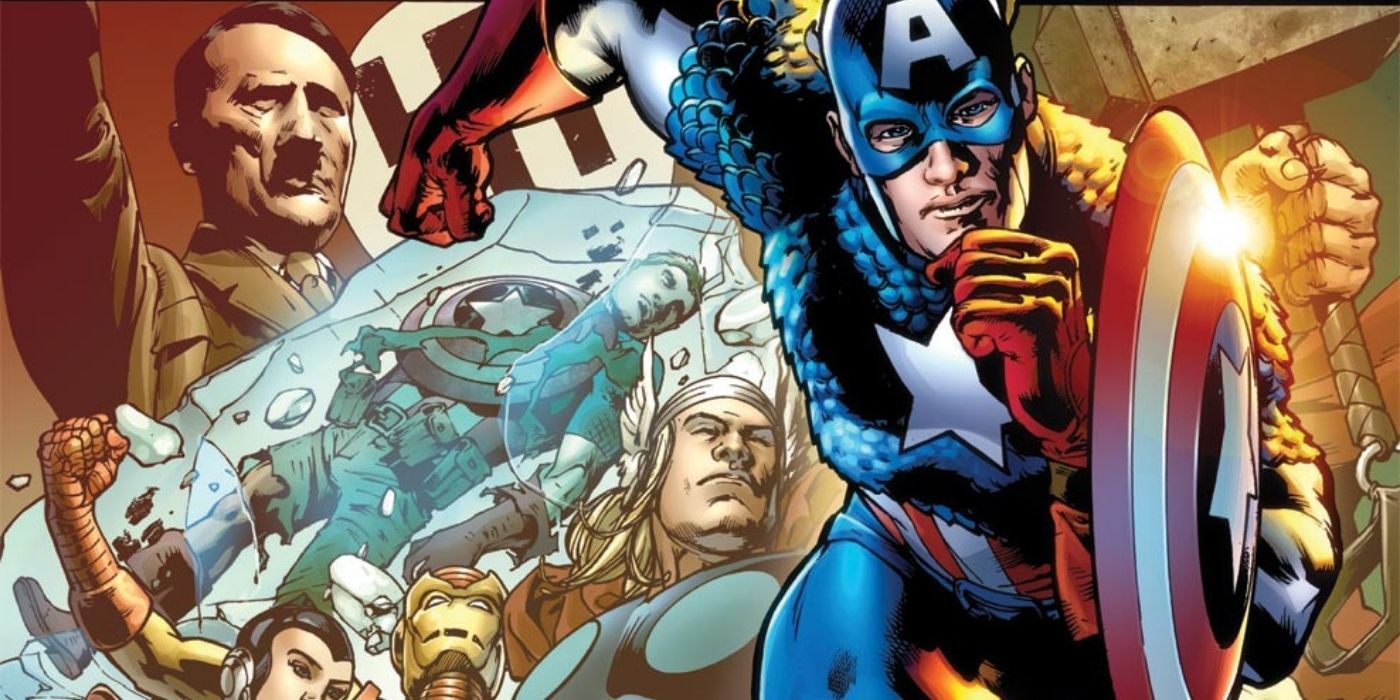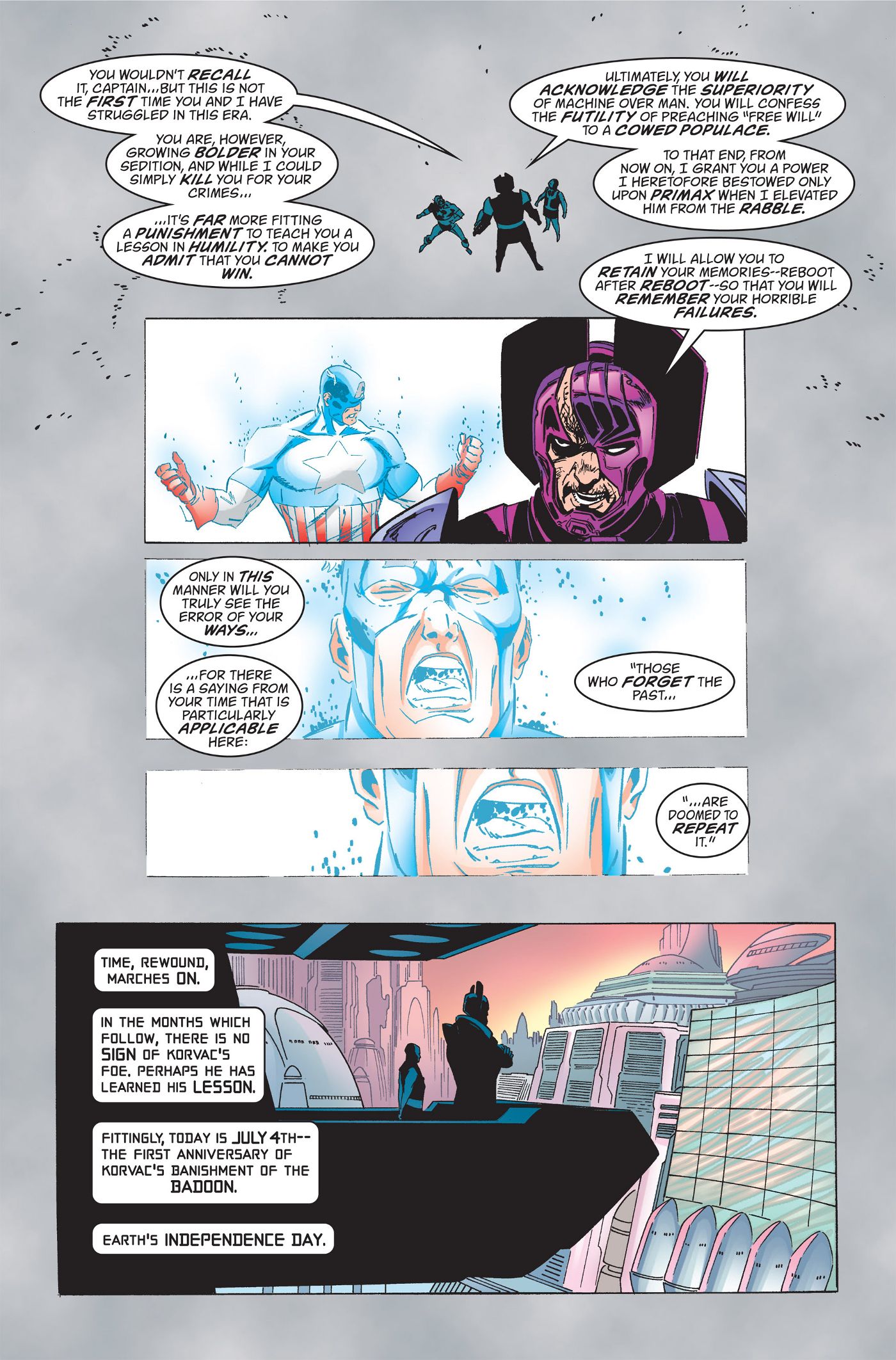The legendary hero Captain America can do a lot of things, from leading armies into battle to besting the Marvel Universe's best fighters in hand-to-hand combat. There is, however, one thing that he is terrible at, and that's time traveling.
Captain America can be considered one of the first time-traveling heroes. Originally created in 1940 by Joe Simon and Jack Kirby for Timely Comics' Captain America Comics (which featured the unforgettable cover with Cap punching Hitler in the face) Steve Rogers was one of the many propaganda outlets used by the U.S. government during the Second World War. After the conflict ended, Captain America enjoyed almost two decades of retirement before Marvel Comics brought him back in 1964. In Avengers #4, Earth's Mightiest Heroes retrieve Steve Rogers' body from a frozen block of ice in the ocean, where he fell during his final mission during the war. Kept alive in suspended animation by the Super Soldier Serum, Cap was ready to come back in the new age of heroes as the leader of the Avengers. His decades-long sleep, a brilliant narrative tool used by Jack Kirby and Stan Lee, was essentially a form of time travel, but that would not be the last time that Cap was tossed around the timeline.
Spending two decades in suspended animation is certainly not the most practical way of moving forward in time, but that is nothing compared to Steve's later misadventures. A storyline titled "Man Out of Time" featured in Captain America volume 3 #18 by Mark Waid, Lee Weeks, and Christie Scheele, shows Cap in the 31st century, a future ruled by the machine-god Korvac. Cap follows Korvac there after the time-traveling villain tricks him into killing the Red Skull to steal his power, which he uses to conquer the future. Steve obviously fights against the tyrant, but Korvac's power allows him to reset time, trapping Cap in an endless loop that goes on for centuries before he finds a way to defeat the villain and come back to his timeline. This doesn't change the fact that Steve spends centuries in Korvac's dystopian future, but that is still not his worst experience with time travel.
When Captain America is assassinated by a mind-controlled Sharon Carter after Civil War, his spirit becomes "locked into a fixed point in space and time" while his mind is transported through time, forcing him to relive certain moments of his life, as seen in Captain America: Reborn by Ed Brubaker, Bryan Hitch, and Paul Mounts. He is resurrected (by his worst enemies, nonetheless), but his awful experiences with time traveling are not over yet. While technically not a case of time traveling, Cap spends a very long time trapped in Arnim Zola's "Dimension Z," a place where time and space move much quicker than in the outside world. Steve spends years there, fighting against Zola and even raising his son Ian to be a hero, and even if he was able to return to his own dimension in the end, it's still another dreadful temporal experience for Captain America. The story "Castaway in Dimension Z" appeared in Captain America volume 7, issues 1-10, written by Rick Remender with art by John Romita Jr. and Dean White.
It is indeed surprising that, while almost every other Marvel hero is able to travel through time and dimensions without any ill effects, Steve Rogers always struggles and has to spend years away from his "normal" life. This is especially curious considering that Captain America is essentially perfect at anything else he does, so time traveling sounds like a very odd weakness. Steve Rogers has been nicknamed "man out of time" due to his original time skip from World War II to the present, and considering how bad his previous record is, it would be best if Captain America stayed as far away as he can from further time travels.


